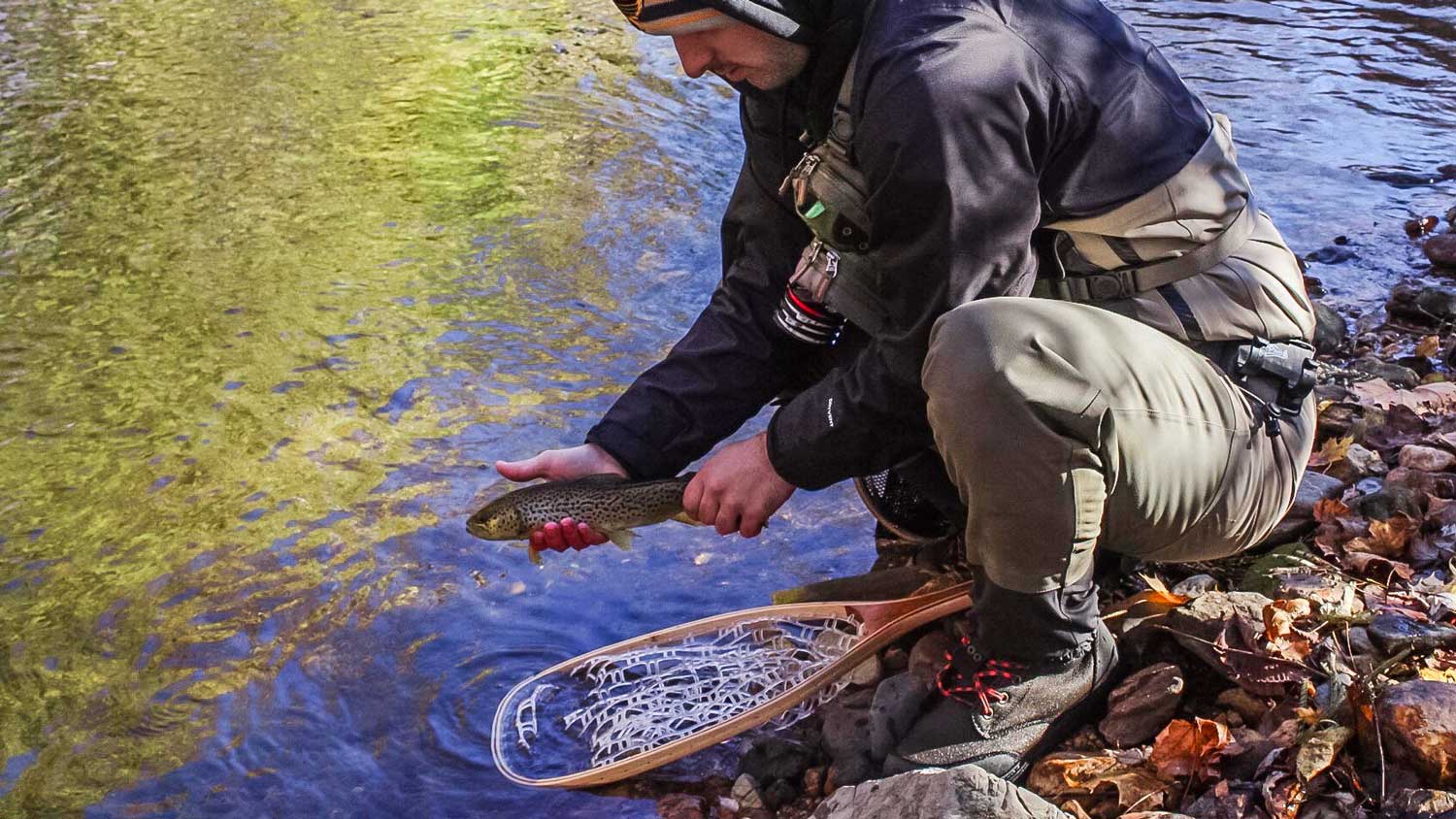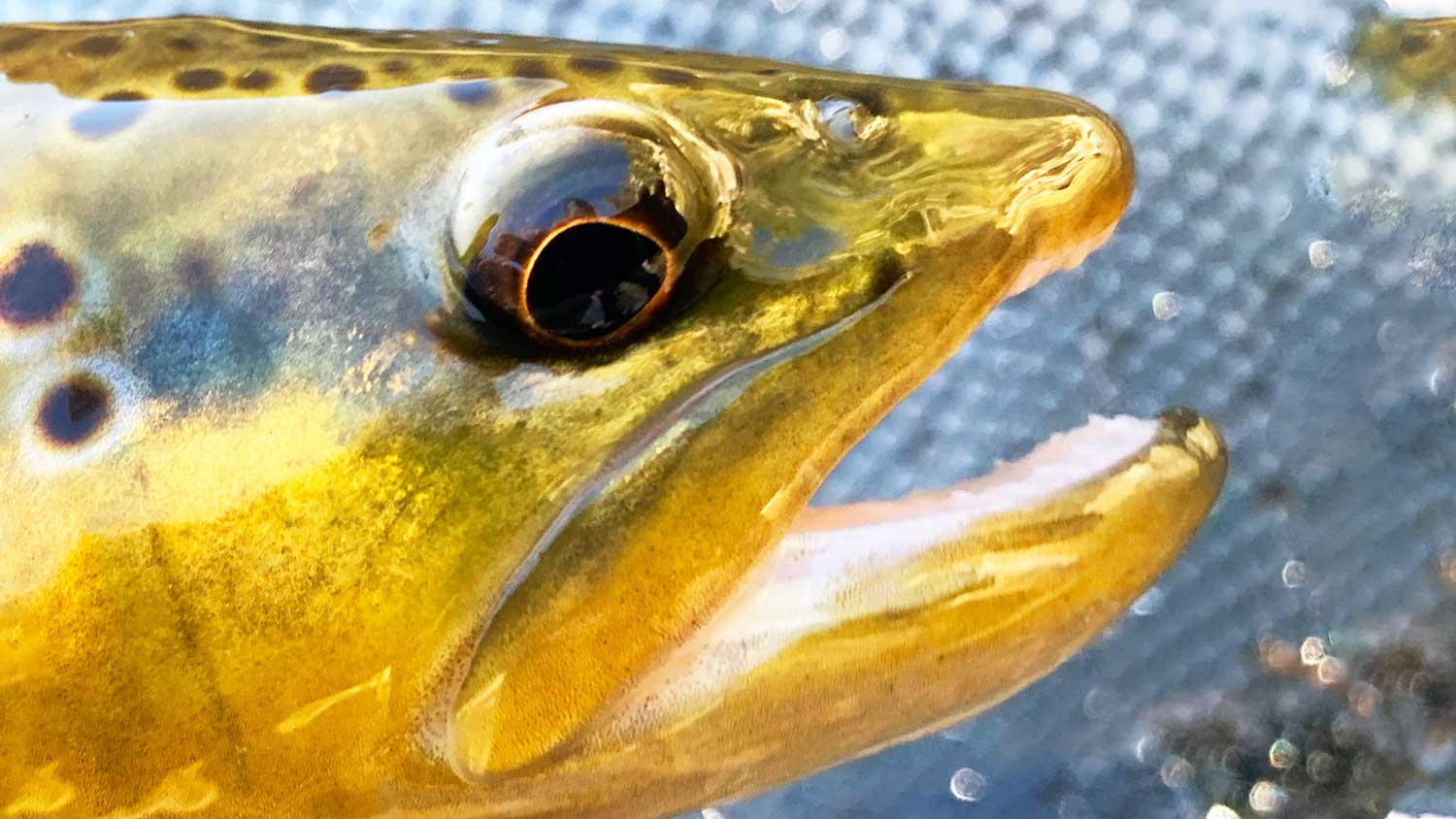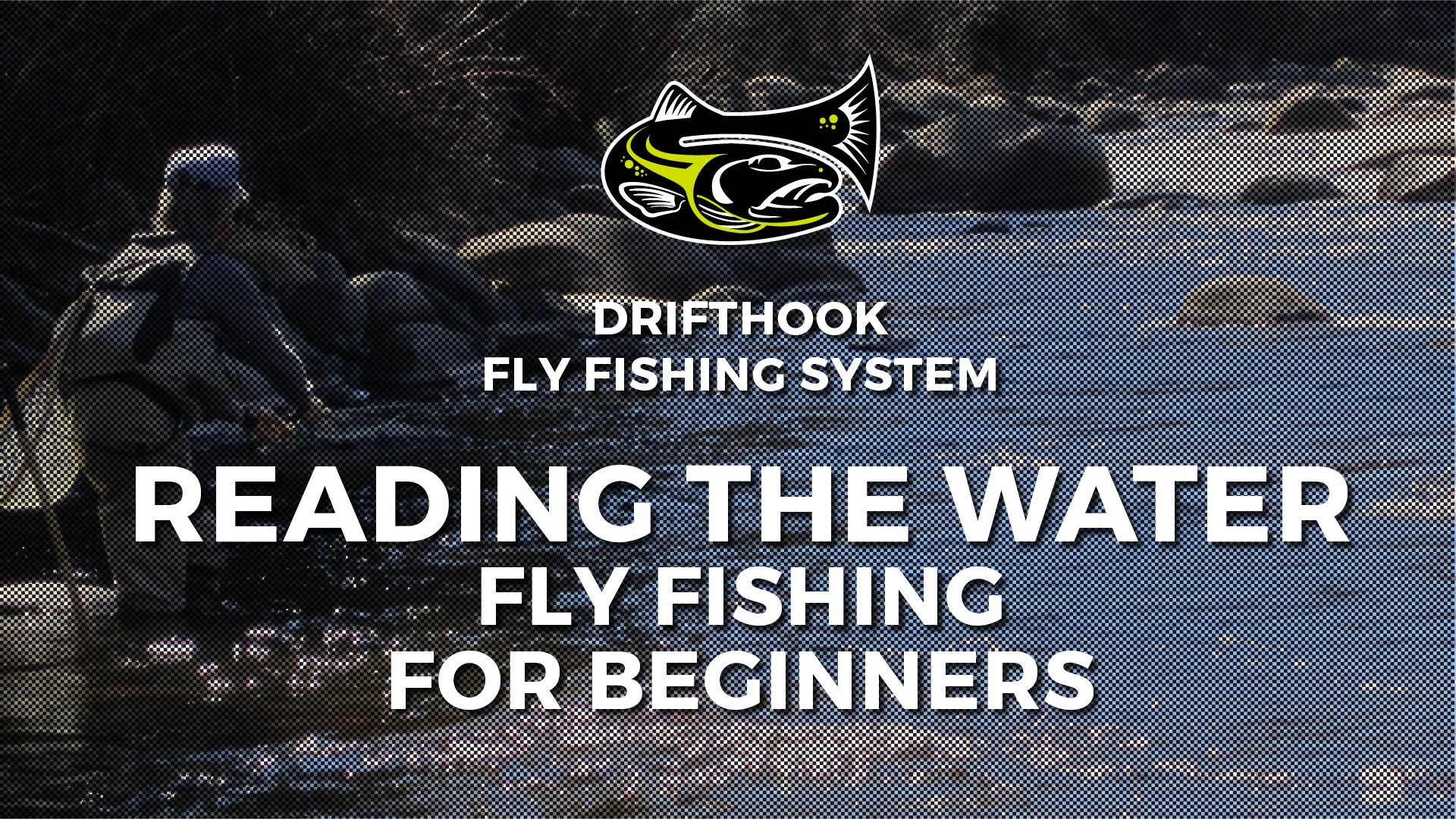
For many of us with interest in the open air, spending hours in nature, and relaxing next to a beautiful riverside, fly fishing can be the perfect hobby. It not only gives us plenty of excitement but can teach us such practical virtues like patience, hard work, and respect for our natural environment.
To start fly fishing today, you will need to do the following:
- Check your state or municipality for license regulations
- Purchase a fishing license if your state or municipality requires it
- Acquire a fly fishing rod and minimal gear
- Purchase flies for fly fishing
- Locate a public fishing location
- Start fly fishing
While this might be an oversimplification of fly fishing, when it comes down to the bare minimum, these are the only steps that you need to take to actually start fly fishing. But that leaves a lot to be explained so we have pulled together a quick guide to help dispel some of those newcomer worries and soothe any anxieties, helping you get out onto the water and catching within no time at all.
So Why Fly Fishing?
You may be familiar with spin fishing using bait and a mono line. This is perhaps the typical perception of the everyday fisherman, especially the one that comes to those unfamiliar with fly fishing. However, there are many styles of fishing, with fly fishing, no doubt becoming the most popular. The artificial bait we use to attract fish is known as "Flies" as a large portion of these mimic natural stages of insect life. Some also mimic baitfish, annelids or worms, and even rodents or mice. This carefully designed piece of equipment replicates numerous forms of natural food using synthetic and natural materials.

Fly fishing is also a more dynamic and active affair than regular spin rod and reel fishing. Some times you will be standing in moving water up to a depth that sustains careful footwork. This, and unlike spinner rod fishing, the weight of the line is whats projects the fly, not the weight of the lure.
Fly fishing is an active art but it is friendly to newcomers. After all, with all safety practices well-followed, the worst that can happen is you struggle to catch fish or come out the loser when trying to reel in a catch. This means that if you enact patience and continually try, you will improve.
Practical Requirements
There are some basic requirements to consider or are needed to jump into the exciting world of fly fishing.
- Time - just like any other pastime or hobby, this sport will take time. But it is time well spent as it gives physical activity, relaxation, and excitement.
- A basic set of necessary equipment
- An understanding of where your local fishing spots are situated and what licenses may be required in your state or country
- A continually updated resource allowing you to keep up with fly fishing expertise from a beginner to intermediate to master level. Drifthook is a fantastic selection for this guidance
- Patience. When taking up any new hobby, you will need to be patient. You’ll make mistakes. Provided you are willing to learn and try again, you will start seeing returns that honor your time-investment
- A love for the natural environment. With the right safety gear and a love for the natural world, you will feel right at home

Your Basic Gear
It’s essential to understand what gear you need, so you’re well-equipped when starting. It does not have to be the most expensive gear, but we do recommend trying out a few different brands to find out what you feel comfortable using without breaking your budget. If you are on a slim budget, check out our article on starting to fly fish for under $300 bucks. Our itemized listing is as follows:
A Sturdy Pair of Wading Boots
It’s essential to have proper foot protection, especially when wading through currents or unstable environments. It helps that they have exceptional grip, and to be comfortable with decent support as you will be on your feet while fly fishing. I also like boots with thick laces so they will not disintegrate through continual exposure to damp environments. Wader boots typically slot over your waders and allow for a comfortable walking experience when gently finding your footing within the river environment. Those with sock liners and breathable materials can enable for a more comfortable experience, mainly when covered by waders.

Waders
Waders are perhaps the most commonly seen form of fly fishing apparel because they are so noticeable and transparent in their purpose. They are thick, waterproof pants that allow for ‘wading’ into river territory while keeping clothes and shoes protected. Even if you decide not to stand in the shallow river for a majority of your fishing trip that day, you can find comfort knowing that a few steps into the river may help you retract a stuck line or pull in a particularly feisty and monster fish.
You have the choice of neoprene or synthetic waders. The first is made of an incredibly thick, neoprene material that allows for dense waterproofing and protection of your clothing underneath. A good pair of neoprenes can last you for years due to their durability. They can also keep you warm in colder climates, especially preventing the temperature of the surrounding water from affecting you too dramatically.

Synthetic waders, on the other hand, are a little lighter and more breathable, which can be a better choice for warmer or dryer climates. A little care and attention can help you discover the best waders for you, depending on your daily requirements. It might be that you can borrow a pair from a friend or try some on before you purchase. Sooner or later, every fly fisher owns a pair of both.

We also highly recommend a wader belt. A wader belt is the one safety item that prevents any severe injuries. If you were to fall into deep, the belt is the only thing that is going to stop your waders from taking on water and turning them into concrete boots.
Trusty Sunglasses
Perhaps not an essential piece of gear, but important nonetheless, sunglasses can help keep your eyes protected during fishing sessions. Remember that water can often reflect a significant amount of glare, effectively blinding you during sensitive operations like casting a line or retrieving a catch if you’re not careful. It also protects your eyes from false casts. Additional sun protection includes UV sun lotion and a good old fishing hat.

Fly Fishing Vest, Day Pack or Hip Pack
As you begin to build your gear up, you will need somewhere to store your fly fishing gear. When your standing knee-high in the water miles from your vehicle and the fish begin to rise, you will want your fly boxes near you so you can easily change out your flies.

Raincoat
I also highly recommend you invest in a rain poncho or coat to protect you from the most unpredictable of elements. Raincoats can prevent long fishing sessions from becoming an exercise in getting damp, cold, and miserable.

Leaders and Tippet
Leaders are the section of clear monofilament or fluorocarbon that connects to your fly fishing line. Tippet is a smaller diameter monofilament or fluorocarbon that attaches to your tippet. You will need these two items to build out various fly fishing rigs to fish in different types of water conditions. For a more in-depth article on fly fishing rigs, check our article on “How Long Should a Leader Be?”

Flies
The one piece of equipment that gives its name to this entire class of fishing expertise, the fly is one of the most essential and convenient pieces of equipment you will have on the water. Flies are designed to replicate a specific form of food supply. While regular live bait may be universal (for the most part) in terms of what fish it can attract, a fly has been carefully and meticulously designed for mimicking a specific hatch of insect or baitfish to target particular species. With all of the orders and species of flies in the world, it can feel overbearing on what to use. But at Drifthook Fly Fishing, we have developed a system to help a beginner to advanced anglers decipher this age-old riddle with ease.

Fishing Utilities
I’m breaking these out from the rest as you can start fly fishing without most of these, but as you build up your skills and different fly fishing techniques, they are great to have and will improve your catch rate as you are out on the water.
- Nippers
- Forceps
- Net
- Floatant
- Weights
- Indicator
Fly Rod and Reel
So far, we have spoken on safety principles, starting equipment, and standard requirements necessary to ensure you are suitable for the fly fishing practice. With that out of the way, we have a chance to talk about the most prideful piece of equipment necessary for essential fly fishing - the rod.
Many rods are build of either two-piece of four-piece sections. The two-piece at one time was the industry standard and boats more potential control, but the four-piece is best known for its portability and has become the standard for manufacturers to date. It is hard to find a two-piece rod nowadays.

It’s also important to note what fish you hope to catch, as this will dictate the strength of your line. Weights 1-4 are suitable for small fish up to medium-sized trout, respectively. From there, weight 5-6 is ideal for medium-sized fish such as trout fishing. In our opinion, Trout are among some of the most exciting and pleasurable fish to catch, putting up a dynamic catching experience. Catching your first trout can end up being the most rewarding day outdoors that you can encounter.
Weights 7, 8, and above are known for larger fish such as bass, steelhead, saltwater, and alpha fish. It is could to take a look at what rod weight you need when getting started so your enjoying its use. Catching a native brook trout on 7 weight would be like towing a tri-cycle with a semi-truck.

For those hoping to begin, we would like to recommend you utilize a moderate action rod out of the moderate fast-action and slow action options that remain, as they allow you to enjoy accurate casting with a healthy amount of stiffness. This can help you learn best fishing practice with a reliable rod, and will show you the requirements of grip and arm action as it relates to your new hobby.
When you get more confident in your abilities, sometimes a medium action to fast action rod is appropriate. These have a limited amount of flex but can be an excellent way to fish for longer distances as the fast action rod helps to cut through wind by creating tighter loops. For those who have never fished before, we would recommend staying away from these until you get comfortable with your casting ability.
Each rod has six major elements of:
- A Handle
- A Reel
- A Hook Keeper
- The Rod A.K.A Ferrules
- Tip
- Guides
Learn How to Read the Water
It’s often quite easy to think of the fly fisher as someone who has an intense relationship with his or her equipment and the fish they hope to catch. This could be easily dramatized in the form of a poem, as the cat-and-mouse aspect, while thoroughly influenced by the need for patience, is one of beauty. But it’s also important to note that your relationship to the water you fish in is as meaningful as how many trout you hope to catch that day.

This is because the water will provide almost all of the context for your fishing experience that day. As such, before you even consider taking a step in, you need to understand how to read it. Doing this can help you know where, when, and why a specific spot may be suitable for fly fishing while another may not be. Most of the fish that reside in any given water live in only 10% of that water. Remember that this is also a dynamic process, as one day can look much different from the next.
First, we need to consider the Shelter. It might be a log, set of branches, or rock that provides texture and directs the flow of the fish from one area to another. The Feeding Lane is moving water that will provide food to the fish. A Lie or Holding Grounds are known to be areas in which currents are not as strong and are locations that trout reside before moving to a feeding lane. The idea place to look for any fisherman is the Seam, in which fast water is moving next to areas of slow-moving or minimal current. This is most frequently where freshwater fish can be found, and that’s where we cast our lines. A Seam can be found in many areas.
They consist of:
- River Bend Seams
- Undercut Banks
- Shelf Seams
- Rock Seams
- Back Seams
For more on reading water, check out this video:
River Safety
Rivers are unpredictable streams of water that hold strong currents. Often, it is difficult to see clearly within. Careful footwork is essential. Clear communication with your fishing partner is also a good idea.
Avoid wading into a point where the water reaches much higher than your knees, as while it may seem as though you have control, strong current can make it very difficult to keep your footing. Wading boots with studded soles allow for better traction, but they must never be completely relied upon. Additionally, a wading staff can allow you to gain clearer traction and provides a necessary counterpoint to hold your weight against. This can be a lifesaver for a range of important reasons.
Always wade into the current, not with your back to it. This allows you some resistant strength. A buddy system, where you wade in holding your friend’s arms or waist, may allow for further stability if needing to exit the water or transition to a more secure spot. In difficult situations, you can use your rod to stabilize yourself further.
Stay smart and use your sensibilities. Pay attention to weather and river warnings. For example, the day after a torrential downpour can often lead to a more aggressive current and stronger flow than before, and it’s not hard to see just how wading with your usual practical pursuits can be an exercise in stupidity. Common sense will prevail.

ALWAYS INSPECT DEPTH!
Not only is river depth an essential safety consideration, but it’s important to note just how fish can use this to assemble and change their movement habits. A shallow environment one day may not hold the same the next-day depending on how weather conditions have been upriver. Usually, darker water is deeper, and so it’s best to be very careful with your footwork using a wading staff and never risk going too deep if you can prevent it.
Common Dos & Don’ts
Fly fishing is like any other sport or hobby. It is always a good idea to keep track of what can make you better at it and what is remaining from succeeding. We have some advice to help you along your fly fishing journey.
DO
- Stay consistent. With enough patience, training, and recasting, you’ll gain skill and expertise more quickly than you imagine.
- Use fly fishing resources such as Drifthook to help guide you through your process, from beginner lessons up to master advice.
- Register with a fly fishing club and fill out your license applications. Engage with the social nature of the club, as you may be able to:
- Flyfish with others around. There’s a big difference between fishing at the riverside and standing in the water. It’s best to have people who can observe you, and you them.
DON’T
- Get frustrated. Fly Fishing is meant to be relaxing and fun and exciting.
- Forget to maintain your equipment.
- Forget to ask for help. Those who fly fish love to offer advice.
About the Author
Matthew Bernhardt, a third-generation Coloradan, grew up at the forefront of the state’s fly-fishing revolution, enjoying time on the water, side by side with experienced guides and lifelong anglers.
By combining his passion for fly-fishing with input from other experienced fly-fishers and guides and his fine arts degree from Colorado State University, Matthew spent five years carefully developing the Drifthook Fly Fishing System, built to help every angler catch more trout.
When he’s not spending time with his wonderful family, you’ll find him out on the water catching MONSTER trout, and he anxiously looks forward to the day when his kids are old enough to join him there.





